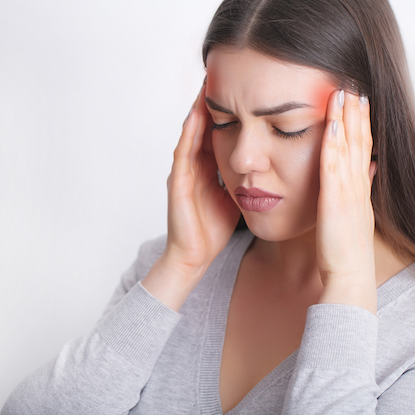 A recent study in Turkey examined the relationship between rosacea and headaches, and found that different types of headaches were significantly associated with certain presentations of rosacea, and that those with moderate or severe rosacea were more likely to experience headaches.
A recent study in Turkey examined the relationship between rosacea and headaches, and found that different types of headaches were significantly associated with certain presentations of rosacea, and that those with moderate or severe rosacea were more likely to experience headaches.
The study enrolled 300 patients diagnosed with rosacea (214 female, 86 male) and 320 control subjects with no rosacea nor any mast cell activation illnesses (208 female, 112 male). Patients experiencing headaches were assessed using the International Headache Classification, and headaches were categorized as migraine, tension-type headaches, secondary-type headaches (due to an underlying medical condition), or cluster-type headaches.
Among the rosacea group, headaches were more common among women than men, and the median age of those with headaches was lower. Migraine was the most common type of headache observed, comprising 59.3% of the total, followed by tension-type (28.6%), secondary-type (11.0%) and cluster-type (1.1%). Twice as many rosacea patients experienced migraines than in the control group (18.0% vs 9.0%). In 81.3% of rosacea patients with headaches, onset occurred after the diagnosis of rosacea. The investigators found there was a positive correlation between rosacea severity and migraine severity.
While the percentage of rosacea patients experiencing headaches was similar to that of the control group (30.3% vs. 25.0%), the rate of headaches among patients with predominantly erythematotelangiectatic rosacea (ETR) was significantly higher than in patients with predominantly papulopustular rosacea (PPR) or rhinophyma (35.2% vs. 16.2% vs. 23.1%, respectively). In terms of comorbidities, rosacea patients with a peptic ulcer were more likely to experience headaches. Among common rosacea triggers, only sunlight was significantly associated with headache.
The rates of migraine and stress-type headaches were comparatively more common among ETR patients than in other subtypes, while tension headaches were more common among those with rhinophyma. The prevalence of burning, stinging and itching (common but non-diagnostic phenotypes of rosacea) was higher in patients who suffered headaches than in those who did not, and was higher in patients who suffered from migraines than from other headache types.
The researchers noted that the results highlighted the connection between migraine and ETR. “The predominant ETR subtype, categorized as a subtype of rosacea with diverse clinical features and insufficient treatment outcomes, may denote a distinctive patient cohort, which demonstrates classic rosacea symptoms, but stems from different pathogenic mechanisms,” they wrote.
Reference
1. Alizada M, Sahin T, Sener O, et al. Evaluation of dermatological and neurological aspects of the relationship between rosacea and headaches. Diagostics (Basel) 2023 Dec 22;14(1):23.